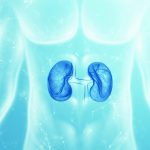Runny noses and sore throats are more prominent during Winter. The initial indicators of the common cold are recognisable: congestion, sneezing, and a scratchy, irritated throat. On average, adults experience 2 to 3 colds annually.
Learn about rhinovirus, the culprit in the common cold, including its causes, symptoms, and treatment options. This comprehensive guide will give you insights.
What is Rhinovirus?
Rhinovirus is a prevalent viral infection responsible for causing the common cold, affecting millions worldwide yearly. Classified under the family Picornaviridae, this virus primarily targets the upper respiratory tract, leading to a range of cold symptoms.
The Cause of Rhinovirus
The primary cause of rhinovirus infection is exposure to the virus itself. Transmission commonly occurs through airborne respiratory droplets when an infected person coughs, sneezes, or talks. Additionally, touching surfaces contaminated with the virus and nose or mouth can facilitate transmission.
Symptoms of Rhinovirus
- Nasal Congestion: A blocked or stuffy nose is a hallmark symptom of rhinovirus infection, often accompanied by a runny nose.
- Sore Throat: Irritation or discomfort in the throat may occur, contributing to soreness or difficulty swallowing.
- Cough: A persistent cough, often dry or accompanied by minimal phlegm, is common with rhinovirus infection.
- Sneezing: Frequent bouts of sneezing may occur as the body attempts to expel the virus from the respiratory tract.
- Fatigue: General feelings of tiredness or fatigue are common during a rhinovirus infection.
- Mild Fever: In some cases, individuals may experience a low-grade fever, although it’s less common with rhinovirus than other viral infections.
It’s important to note that symptoms vary in severity from person to person and can overlap with those of other respiratory infections.
However, if the immune system fails to repel the virus, signs of infection will emerge.
Risk Factors
While colds can strike at any time, certain factors heighten susceptibility:
- Being a young child or an older adult
- Possessing a weakened immune system
- Seasonal influences, with winter fostering a higher prevalence of colds.
- Proximity to individuals with colds
Complications
Typically, non-threatening colds generally fade within 7–10 days. Yet, complications may arise, particularly for those with compromised immune systems. These complications include:
- Pneumonia
- Acute bronchitis
- Bronchiolitis
- Croup
- Otitis media (middle ear infection)
- Strep throat
Additionally, colds can exacerbate symptoms in individuals with asthma or chronic obstructive pulmonary disease (COPD), encompassing emphysema and chronic bronchitis.
Prevention
- Avoiding close contact with individuals harbouring a cold
- Adhering to a nutritious diet rich in fresh produce
- Practising proper sneezing and coughing etiquette, utilising tissues, and promptly washing hands
- Regularly washing hands with soap and water for at least 20 seconds
- Maintaining cleanliness of surfaces at home and work
- Refraining from touching the face, particularly the eyes, nose, and mouth
Read next: RSV in children
Treatment of Rhinovirus
As a virus causes rhinovirus infections, antibiotics are ineffective in treating the condition. Instead, treatment relieves symptoms and supports the body’s immune response. While no cure exists for the common cold, symptomatic relief is attainable through various means:
Recommended strategies may include:
- Rest: Adequate rest allows the body to conserve energy and focus on fighting off the infection.
- Hydration: Drinking plenty of fluids helps keep the respiratory tract moist and aids in loosening congestion.
- Over-the-counter Medications: Cold medications may relieve symptoms such as nasal congestion, cough, and sore throat. These may include decongestants, antihistamines, and pain relievers. However, it’s essential to use these medications as directed and consult a healthcare professional, especially when considering their use in children.
- Humidifiers: Using a humidifier can help add moisture to the air, easing congestion and throat discomfort.
- Saline Nasal Sprays: Saline nasal sprays or drops can help alleviate nasal congestion and promote drainage.
- Avoiding Irritants: Avoiding exposure to irritants such as cigarette smoke can help prevent further respiratory tract irritation.
When To See a Doctor
Individuals with underlying health conditions or weakened immune systems should seek medical attention if symptoms persist or worsen.
When a virus infiltrates the body, the immune system fights to combat it. In individuals with robust immune systems, symptoms may remain dormant. However, if the immune system fails to repel the virus, signs of infection will emerge.
In conclusion, rhinovirus is a common viral infection responsible for causing the familiar symptoms of the common cold. By understanding its causes, symptoms, and available treatment options, individuals can take proactive steps to manage and alleviate the discomfort associated with rhinovirus infection.
Many individuals occasionally catch a cold, which isn’t severe but can pose risks for older adults and individuals with weakened immune systems. While there’s no cure for a cold, treatments can offer temporary symptom relief. Practicing good hygiene, such as regular handwashing, can aid in cold prevention.
Sources:












